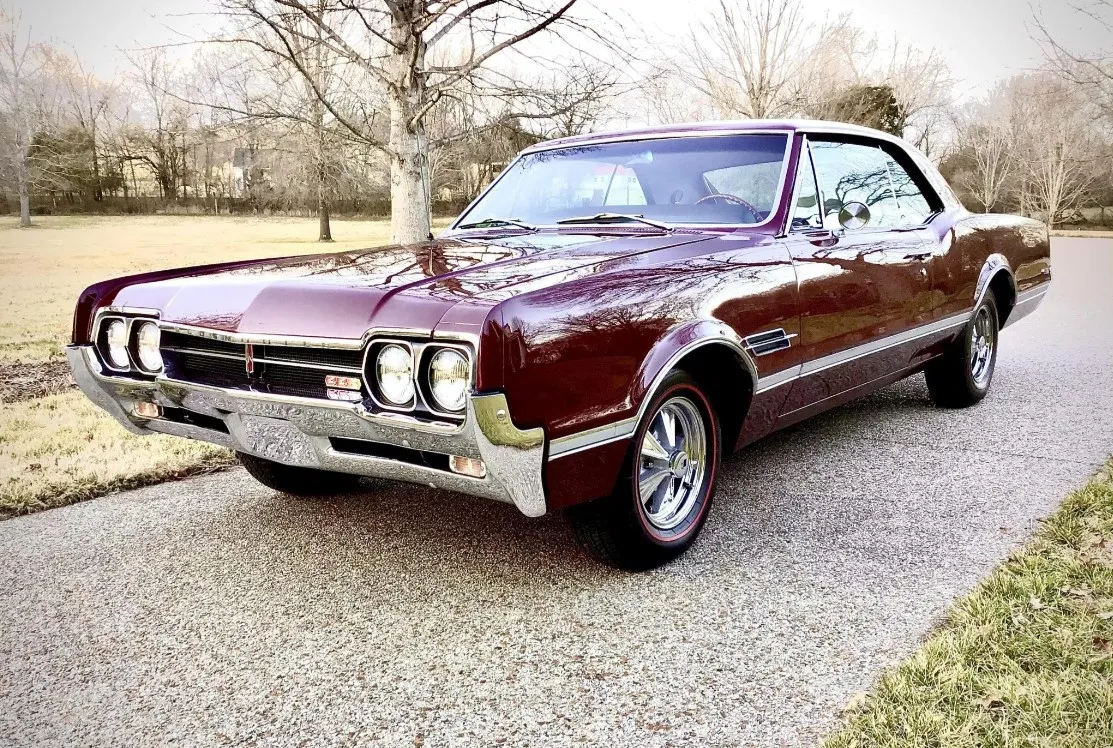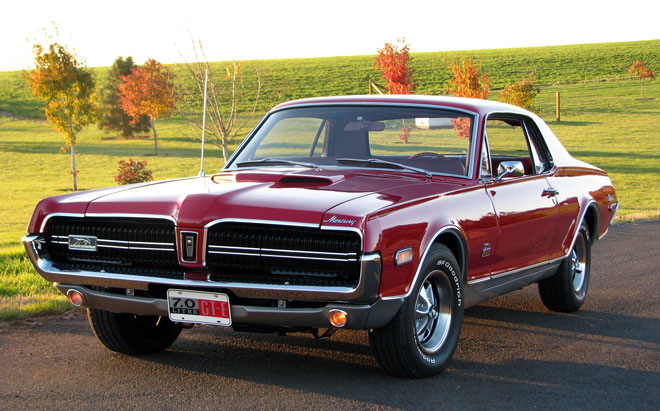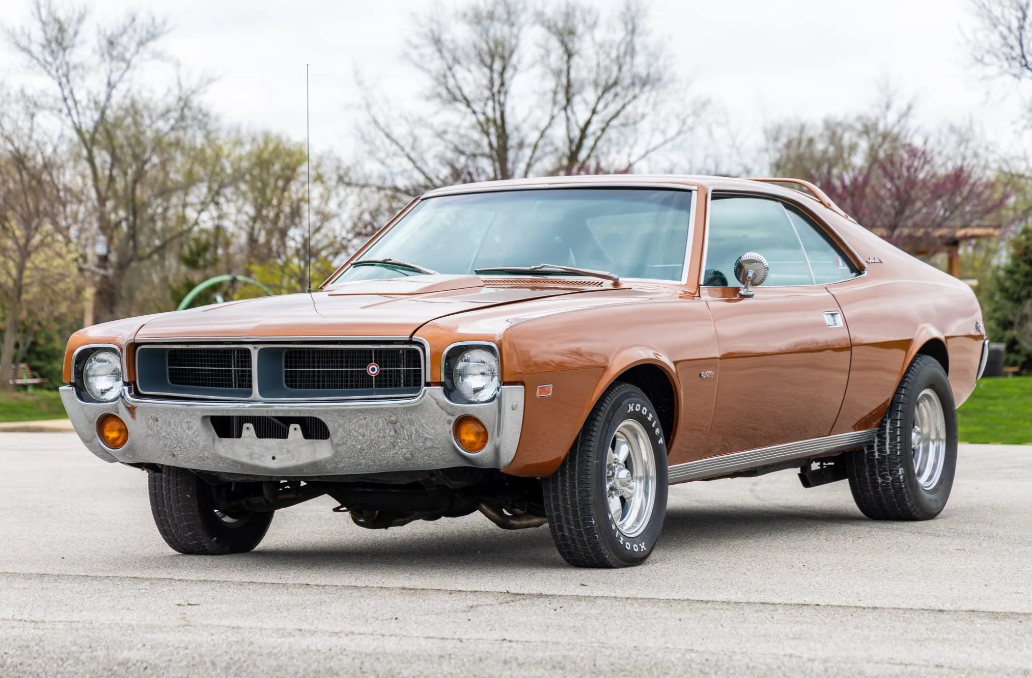In the heyday of American automobile innovation, the 1950s, car enthusiasts were treated to a dazzling array of concept cars that pushed the boundaries of design and technology. Among these automotive marvels, the 1954 Buick Wildcat II stands out as a true masterpiece. A symbol of creativity and ambition in the post-war era, this car was a testament to Buick's commitment to pushing the envelope in automotive design. In this article, we delve into the history, design, and legacy of the 1954 Buick Wildcat II.
1. The History and Inspiration Behind the 1954 Buick Wildcat II
The 1954 Buick Wildcat II was the second in a series of three Wildcat concept cars produced by Buick between 1953 and 1955. The Wildcat series was inspired by the idea of creating a car that not only showcased cutting-edge design and technology but also captured the spirit of freedom and adventure that defined the American automotive experience. Buick's chief designer, Harley Earl, was the driving force behind the Wildcat II, leveraging his visionary approach to design and passion for innovation to create a vehicle that would leave a lasting impact on the automotive world.
The Wildcat II made its public debut at the 1954 General Motors Motorama, an annual exhibition showcasing the latest concept cars and automotive technology from the various divisions of General Motors. The Motorama provided a platform for Buick to unveil the Wildcat II to the world, generating excitement and anticipation for the future of Buick design.
2. The Groundbreaking Design of the 1954 Buick Wildcat II
The design of the 1954 Buick Wildcat II was a radical departure from the traditional Buick models of the time, featuring a sleek and futuristic aesthetic that was unlike anything seen before. The car's low-slung, aerodynamic profile, and sculpted lines were accentuated by a prominent front grille, distinctive headlamps, and a dramatic wraparound windshield. The Wildcat II's styling was heavily influenced by the burgeoning jet age, with design cues such as its rocket-shaped taillights and exhaust ports evoking a sense of speed and power.
Exterior Design
The front end featured a distinctive grille with thin vertical bars, flanked by large, round headlights. The front fenders were sculpted and extended rearward, creating a streamlined look that was accentuated by the car's wraparound windshield and curved side glass.
The rear of the Wildcat II was marked by its unique tail fins, which were inspired by the emerging jet age and helped to create a sense of speed and motion, even when the car was stationary. The tail fins also housed the car's taillights, which were integrated into the design in a seamless and elegant manner.
The Wildcat II's body was constructed of fiberglass, a lightweight and durable material that was still relatively new to automotive applications at the time. The use of fiberglass helped to reduce the car's overall weight, contributing to its performance and handling capabilities.
Interior Design
The interior of the 1954 Buick Wildcat II was designed to be both luxurious and functional, with a focus on driver comfort and ease of use. The cockpit featured a wraparound dashboard that placed all controls and instruments within easy reach of the driver, creating an ergonomic and intuitive layout.
High-quality materials, such as leather and chrome, were used throughout the cabin to create a sense of luxury and refinement. The Wildcat II's seats were low and supportive, with a design that was both sporty and comfortable for long drives.
3. The Technological Features of the 1954 Buick Wildcat II
The 1954 Buick Wildcat II was more than just a design exercise; it also showcased a range of advanced technologies that would go on to influence future Buick models. One such feature was the car's innovative suspension system, which utilized air springs to provide a smooth and comfortable ride. This innovative technology allowed the Wildcat II to adapt to various road conditions, delivering a driving experience that was both comfortable and engaging.
Powering the Wildcat II was a modified version of Buick's 322-cubic inch (5.3-liter) "Nailhead" V8 engine. This powerful engine was further enhanced with the addition of a four-barrel carburetor and dual exhausts, resulting in an impressive output of 220 horsepower. The engine was mated to a two-speed Dynaflow automatic transmission, which provided smooth and responsive gear changes.
Inside the Wildcat II, the cockpit-style interior was designed with the driver in mind, featuring a range of innovative controls and displays that were designed to be both intuitive and visually appealing. The instrument panel was highlighted by a unique "floating" speedometer, which was suspended in a clear plastic housing, giving the impression that it was hovering above the dashboard. Other advanced features included a push-button transmission selector, power-adjustable seats, and a state-of-the-art sound system.
4. The Legacy of the 1954 Buick Wildcat II
Although the 1954 Buick Wildcat II never went into production, its influence on the future of Buick design and the automotive industry as a whole cannot be overstated. The Wildcat II's groundbreaking design and innovative technology served as a blueprint for subsequent Buick models, such as the 1954 Buick Skylark and the 1959 Buick Electra.
Furthermore, the Wildcat II's use of fiberglass body construction and advanced suspension technology paved the way for the development of other iconic American sports cars, such as the Chevrolet Corvette. The Wildcat II also played a significant role in popularizing the concept car as a tool for showcasing new ideas and generating excitement for the future of automotive design.
Today, the 1954 Buick Wildcat II remains a beloved piece of automotive history, attracting the admiration of both classic car enthusiasts and design aficionados alike.The car's bold styling, innovative technology, and visionary approach to design serve as a testament to the creativity and ingenuity of the American automotive industry during the 1950s. As a symbol of a bygone era, the Wildcat II continues to inspire and captivate those who appreciate the beauty and artistry of classic automobiles.
5. The 1954 Buick Wildcat II as a Collector's Item
As a one-of-a-kind concept car, the 1954 Buick Wildcat II is an extremely rare and valuable collector's item. The car's unique design and historical significance have made it a sought-after prize for car collectors and enthusiasts alike. The Wildcat II has been featured in various automotive museums and exhibitions, where it continues to draw crowds and admiration for its stunning design and groundbreaking technology.
In recent years, the value of concept cars such as the Wildcat II has continued to rise, as collectors and investors recognize the unique appeal and potential of these rare vehicles. The Wildcat II's undeniable charm and enduring legacy make it a prized possession for any collector of classic American automobiles.
The 1954 Buick Wildcat II stands as a shining example of American automotive ingenuity, showcasing a visionary design and groundbreaking technology that would shape the future of Buick and the automotive industry as a whole. As a concept car, the Wildcat II captured the imagination of the public and set the stage for the evolution of automotive design in the 1950s and beyond.
Today, the Wildcat II remains an enduring symbol of America's golden age of automotive design, attracting admiration and acclaim from classic car enthusiasts and design aficionados alike. As a rare and valuable collector's item, the 1954 Buick Wildcat II continues to captivate and inspire, serving as a reminder of the creativity and innovation that defined the American automotive industry during this fascinating period in history.



